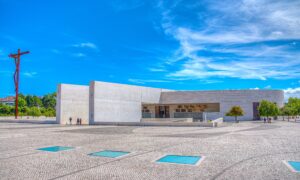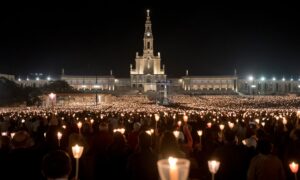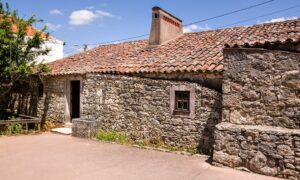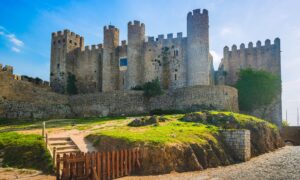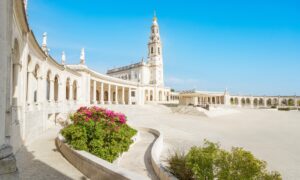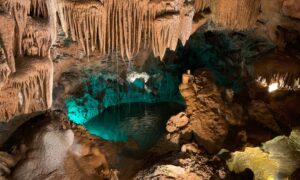Perched in the peaceful town of Batalha, Portugal, the Monastery of Santa Maria da Vitória, commonly known as the Batalha Monastery, is one of the country’s most treasured national monuments and a UNESCO World Heritage Site. This architectural masterpiece is not only a symbol of Portugal’s rich cultural and religious heritage but also stands as a reminder of one of the most significant military victories in Portuguese history. The intricate details of its Gothic and Manueline architecture, its deep historical importance, and the serene atmosphere make it a must-visit for anyone exploring the region.
The History of Batalha Monastery
The Batalha Monastery was commissioned in 1386 by King João I to commemorate the Portuguese victory at the Battle of Aljubarrota in 1385, a decisive moment in securing Portugal’s independence from Castile. In this battle, the Portuguese forces, led by Nuno Álvares Pereira, defeated a much larger Castilian army, ensuring the reign of King João I and solidifying the independence of the Portuguese nation.
As a gesture of gratitude for this miraculous victory, King João I vowed to build a grand monastery dedicated to the Virgin Mary, naming it Santa Maria da Vitória (Saint Mary of Victory). The monastery also became a symbol of the newly established Aviz Dynasty, playing a significant role in the religious, political, and cultural identity of Portugal in the late Middle Ages.
Construction of the monastery began in 1386 and took nearly two centuries to complete, spanning the reigns of seven kings. The long period of construction is evident in the mix of architectural styles, with the initial Gothic design eventually incorporating Manueline elements, Portugal’s unique, ornate style of late Gothic architecture.
Architectural Highlights
Batalha Monastery is a stunning example of Portuguese Gothic architecture, with later additions of Manueline and Flamboyant Gothic styles. The combination of these elements creates a visually breathtaking experience, with intricate stone carvings, towering spires, and ornate details at every turn.
Some of the key architectural highlights include:
- Gothic Grandeur: The monastery is a masterpiece of Flamboyant Gothic architecture, characterized by its pointed arches, ribbed vaults, and elaborate stone tracery. The impressive height and scale of the building, combined with its intricate design, create a sense of awe as you approach the monument.
- Manueline Ornamentation: The Manueline style, named after King Manuel I, is a uniquely Portuguese take on Gothic architecture, with nautical and exotic motifs reflecting Portugal’s Age of Discoveries. At Batalha, you can see this style in the Chapter House’s ornate portal and the Unfinished Chapels (Capelas Imperfeitas), where the use of maritime symbols and intricate carvings showcases Portugal’s growing global influence.
What to See and Visit at Batalha Monastery
There’s no shortage of things to explore at Batalha Monastery. As you walk through its serene cloisters, chapels, and halls, you’ll discover fascinating historical details and stunning examples of medieval craftsmanship. Here are some must-see highlights:
1. The Royal Cloister (Claustro Real)
The Royal Cloister is one of the most serene and architecturally stunning areas of the monastery. Its double-arched galleries, intricately decorated with Flamboyant Gothic tracery, are a highlight of the site’s beauty. This cloister was used by the Dominican monks who resided in the monastery, and it offers a tranquil space for reflection and contemplation.
- What to See: The cloister is known for its ornate stonework, including decorative gargoyles, detailed carvings of plants and animals, and the Manueline-style arcades. Take time to appreciate the peaceful atmosphere, with its perfect symmetry and intricate design.
2. Founder’s Chapel (Capela do Fundador)
The Founder’s Chapel is one of the most significant parts of the monastery, housing the tombs of King João I and his wife, Queen Philippa of Lancaster. Their tombs are situated side by side, reflecting the unity between Portugal and England through the Treaty of Windsor, which cemented an enduring alliance.
The chapel also contains the tombs of their sons, including Henry the Navigator, a key figure in the Portuguese Age of Discoveries. The chapel’s octagonal design and stunning stained-glass windows create an ethereal atmosphere.
- What to See: The royal tombs are elaborately decorated with gothic stone carvings. Note the beautiful details, such as the crossed hands of João I and Philippa, a symbol of their enduring partnership and love.
3. The Unfinished Chapels (Capelas Imperfeitas)
The Unfinished Chapels are perhaps the most famous and intriguing section of Batalha Monastery. Begun under the reign of King Duarte, these chapels were intended to be his final resting place, but construction was never completed, giving them a hauntingly beautiful, open-to-the-sky appearance.
Despite being incomplete, the chapels are a stunning example of Manueline architecture, with intricate stonework featuring maritime motifs, twisted columns, and elaborate arches.
- What to See: The Manueline-style portal leading into the Unfinished Chapels is a masterpiece of decorative stone carving, with incredible attention to detail. As you stand inside the chapels and look up at the open sky, the sense of history and architectural ambition is palpable.
4. Chapter House (Sala do Capítulo)
The Chapter House is another architectural marvel, featuring a soaring vaulted ceiling with no central support—an impressive feat of medieval engineering. It’s also the resting place of Portugal’s Unknown Soldiers, who died in World War I. This solemn area serves as both a place of reflection and a memorial to those who gave their lives for their country.
- What to See: The grandiose portal leading to the Chapter House is richly decorated in Manueline style, and the ceiling inside, with its expansive ribbed vaulting, is awe-inspiring. The tomb of the Unknown Soldiers is guarded by two sentinels, adding a sense of solemnity to the room.
5. The Main Church (Nave and Choir)
The monastery’s nave is a towering space, characterized by its simple yet powerful verticality. The interior is filled with natural light streaming through the stained-glass windows, which depict biblical scenes and saints. The vast open space of the nave leads to the high altar, a place for quiet prayer and contemplation.
- What to See: The church’s stained-glass windows are among the highlights, providing a colorful contrast to the otherwise austere stone interior. The ribbed vaulting and pointed arches create a sense of grandeur, drawing your eye upward toward the heavens.
Tips for Visiting Batalha Monastery
- Plan your time: The monastery is large, and there’s plenty to explore. Give yourself at least 1–2 hours to fully appreciate its beauty and history.
- Photography: While photography is allowed, be respectful of those praying or attending services, especially in the main church and chapels.
- Combine with other sites: Batalha is close to other UNESCO sites like the Alcobaça Monastery and the Convent of Christ in Tomar, making it easy to include on a cultural day trip through central Portugal.
Conclusion
The Batalha Monastery is not just an architectural gem, but a testament to Portugal’s history, identity, and faith. From the grandeur of the Founder’s Chapel to the mysterious beauty of the Unfinished Chapels, every corner of this monastery tells a story of devotion, victory, and artistic brilliance. Whether you’re a history buff, an architecture enthusiast, or a spiritual pilgrim, a visit to Batalha Monastery offers a deeply enriching experience.


